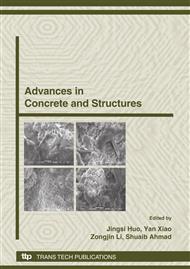p.775
p.783
p.789
p.795
p.801
p.807
p.815
p.821
p.831
Effect of Site Conditions on the Design of Removable Anti-Ram Bollards
Abstract:
Removable Anti-ram bollards used in perimeter protection are tested to meet performance requirements of established standards such as the US Department of State specification SD-STD-02.01. Under these standards, tests are conducted in prescribed conditions that should be representative of the service installation. In actual project, conditions encountered on site may vary from the test environment and it would be expensive and time consuming to validate each deviation with a physical test. High-fidelity physics-based (HFPB) finite element modeling can provide precise simulations of the behavior of anti-ram bollards. This paper presents the use of HFPB finite element modeling, using LS-DYNA, in an actual project to evaluate the performance of an anti-ram bollard design according to the actual site condition that is different with the test requirement. The study suggests that removable anti-ram bollards must be designed and engineered to actual conditions that are found on site. It also shows that HFPB modeling can be an effective tool that supplements physical testing of anti-ram bollards.
Info:
Periodical:
Pages:
801-805
Citation:
Online since:
October 2008
Authors:
Price:
Сopyright:
© 2009 Trans Tech Publications Ltd. All Rights Reserved
Share:
Citation:


